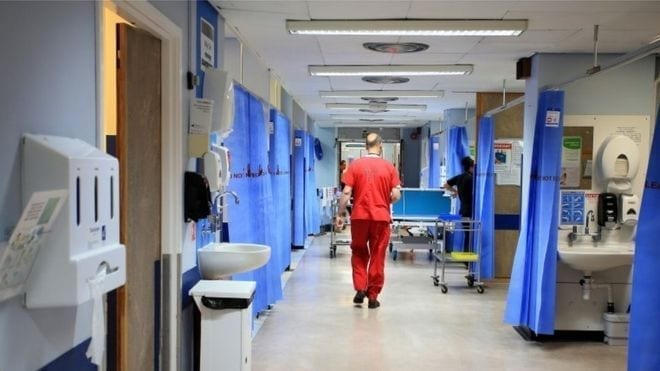From poorly designed rooms that increase the chance of patients falling, to loud noises and a lack of privacy, some suggest that hospitals and how they’re designed might be making patients sicker. According to a New York Times article, “hospitals are among the most expensive facilities to build, with complex infrastructures, technologies, regulations and safety codes,” but new evidence has found that we have been building them wrong. The way hospitals are currently built leads to high numbers of hospital-acquired infections, little to no privacy for patients, falling risks, loud noises, and an overall poor patient experience.
From poorly designed rooms that increase the chance of patients falling, to loud noises and a lack of privacy, some suggest that poorly designed hospitals might be making patients sicker. According to a New York Times article, “hospitals are among the most expensive facilities to build, with complex infrastructures, technologies, regulations and safety codes,” but new evidence has found that we have been building them wrong. The way hospitals are currently built leads to high numbers of hospital-acquired infections, little to no privacy for patients, falling risks, loud noises, and an overall poor patient experience.
Anyone who has every stayed in a hospital knows how hard it is to get adequate rest. Even doctors agree it’s often hard to rest with all the hustle and bustle and noise going on around them. In fact, evidence suggests that the “average noise level in hospitals far exceeds guideline-based recommendations, making it hard for patients to sleep.” For many patients, sleep is necessary for healing, so a great way to remedy this problem would be to reduce “exposure to noise, whether via earplugs, sound-absorbing acoustic panels, quieter staff conversations, and fewer unnecessary alarms.”
Finding ways to reduce hospital-acquired infections would also be a great way to transform hospitals into a true place of healing, considering the fact that “hospital-acquired infections are an enormous contributor to illness and death” and affect “up to 30 percent of intensive care unit patients.” With current hospital designs, patients are often housed together, increasing the risk of “airborne infections and those transmitted by touching contaminated surfaces.” Private patient rooms can reduce this risk. In fact, studies have reported that “transitioning from shared to private rooms decreased bacterial infections by half and reduced how long patients were hospitalized by 10 percent.” Think private rooms are too expensive? Think again. According to studies, “the increased cost of single-occupancy rooms is more than offset by the money saved because of fewer infections.”

Then there’s the risk of falls, which is a major problem in hospitals that can lead to “serious injuries, longer hospital stays and significant costs.” How do falls even happen in hospitals? Well, patients are at risk of falling in their rooms because it’s an unfamiliar space, and they’re often moving around while “disoriented by pain and medications.” Additionally, other design factors are to blame for hospital falls, like “poorly lit areas, slippery floors, and toilets that are too high or too low.”
Privacy and the overall patient experience can also be improved, and “is inextricably linked to how well patients rest and recover.” For a long time, hospitals have struggled with the issue of patient privacy, despite HIPAA laws. For example, though doctors are taught not to talk about patients, they often do, and topics during these discussions usually revolve around a patient’s “sexual or drug history,” often within earshot of other patients and strangers “on the other side of a curtain.” Unfortunately, research has “found that almost all physicians breach confidentiality in this way and that patients in curtained spaces are more likely to withhold parts of their medical history or refuse parts of the physical exam” because of it.
As Roger Ulrich, a professor of architecture at the Center for Healthcare Building Research at Chalmers University of Technology in Sweden, recently said in regard to poorly designed hospitals and patient experience, “hospitals can be dangerous and unpleasant, but there’s a lot we can do to keep patients safe and help them recover.”
Because of all the research and studies that have been done regarding this subject, many are calling for an “urgent need to change the way we build, maintain and work in hospitals” in order to create a better place of healing for patients.
Sources:
Bad Hospital Design Is Making Us Sicker
Better Hospital Design Can Improve Outcomes, Patient Experience


Join the conversation!